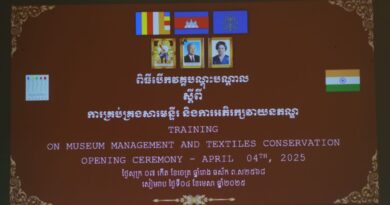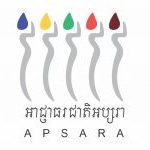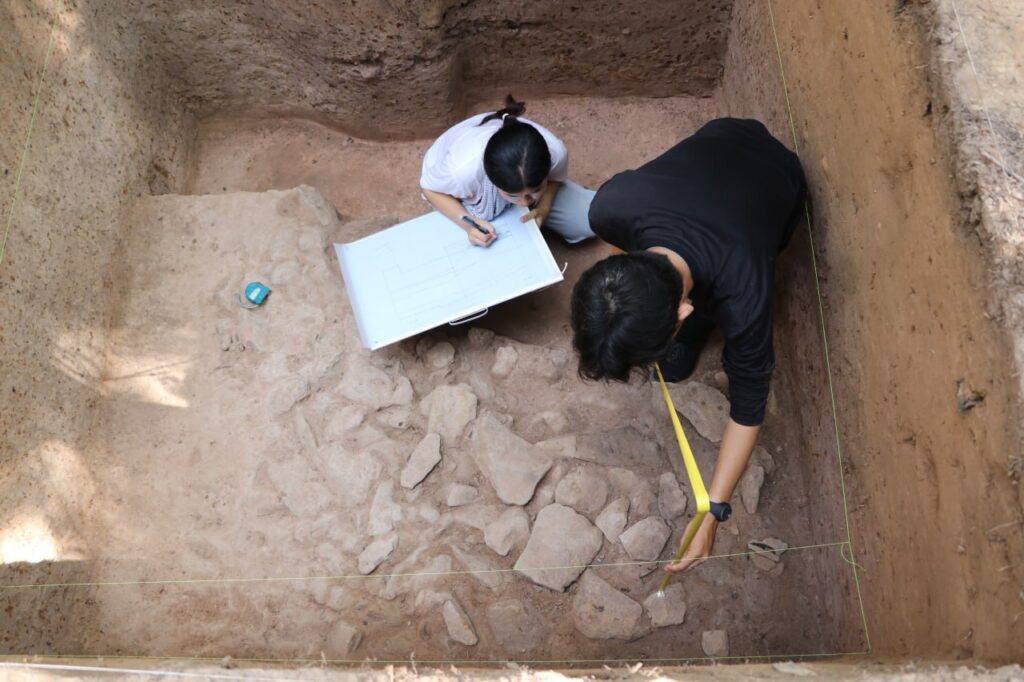នៅដើមខែសីហា ឆ្នាំ២០២៤នេះ អាជ្ញាធរជាតិអប្សរា និងសាកលវិទ្យាល័យសូហ្វីយ៉ា បានធ្វើកំណាយស្រាវជ្រាវទួលបុរាណនៅភាគអាគ្នេយ៍ក្នុងកំពែងនៃប្រាសាទបន្ទាយក្ដី ដើម្បីឈ្វេងយល់អំពីទំនាក់ទំនងរវាងកំពែង និងទួល ព្រមទាំងរចនាសម្ពន្ធរបស់ទួល។ លើសពីនេះទៀត គឺចង់ដឹងអំពីការរស់នៅរបស់មនុស្សនាសម័យនោះ ពោល គឺចាប់ពីពេលមុនសាងសង់ប្រាសាទរហូតដល់សម័យកណ្ដាល។
លោក ញឹម សុធាវិន្ទ អ្នកស្រាវជ្រាវ និងជាសាស្រ្តាចារ្យ នៃសាកលវិទ្យាល័យសូហ្វីយ៉ា ប្រទេសជប៉ុន បានលើកឡើងថា ការជ្រើសរើសយកទីតាំងនៅអាគ្នេយ៍នៃប្រាសាទបន្ទាយក្តី សម្រាប់កិច្ចការស្រាវជ្រាវ ដោយហេតុថា នៅទីតាំងនេះ មើលតាមរូបថត lidar ឃើញមានទួលជាច្រើន ដូចជា នៅប្រាសាទអង្គរវត្ត និងប្រាសាទតាព្រហ្មជាដើម។ ដូច្នេះហើយ នៅក្នុងកំណាយស្រាវជ្រាវ ពោល គឺសិក្សាអំពីលំនៅឋាន និងការតាំងទីរស់នៅរបស់មនុស្សនាសម័យមុន។ ម្យ៉ាងទៀត កិច្ចការសំខាន់ គឺការបណ្តុះបណ្តាលធនធានមនុស្ស ដែលសាកលវិទ្យាល័យសូហ្វីយ៉ា បានអនុវត្តតាំងពីឆ្នាំ១៩៩១មកម៉្លេះ។ ឆ្នាំនេះ សាកលវិទ្យាល័យសូហ្វ៊ីយ៉ាបានជ្រើសរើសនិស្សិតមកពីមហាវិទ្យាល័យបុរាណវិទ្យានៃសាកលវិទ្យាល័យភូមិន្ទវិចិត្រសិល្បៈ ឆ្នាំទី២ និងទី៣ ចំនួន៣នាក់ ដើម្បីមកចូលរួមសិក្សាអំពីការធ្វើកំណាយបែបបុរាណវិទ្យា។
ចំណែកបុរាណវិទូ នៃអាជ្ញាធរជាតិអប្សរា លោក វិទូ ភារម្យ បានឱ្យដឹងថា កំណាយនេះ បានបើកចំនួនបីរណ្តៅ ក្នុងជម្រៅ២ម៉ែត្រគុណ២ម៉ែត្រ មាន២រណ្តៅ និង២ម៉ែត្រគុណ១.៥០ម៉ែត្រ ១រណ្តៅ ដោយរណ្តៅនីមួយៗ បែងចែកជា៤ស្រទាប់សំខាន់ៗ។ តាមការសន្និដ្ឋានរបស់លោក ការសាងសង់ទួលនៅក្នុងកំពែង មាន៣ដំណាក់កាលធំៗ គឺដំណាក់ទី១ អាចមានពលករមករៀបចំស្នាក់នៅ ដើម្បីត្រៀមរៀបចំការសាងសង់ប្រាសាទនៅលើទួលដែលមានស្រាប់។ ដំណាក់កាលទី២ ពេលកំពុងសាងសង់ប្រាសាទ គឺមនុស្សបន្តរៀបចំទួលនេះ ដោយចាក់ដីបន្ថែម និងយកកម្ទេច និងបំណែកថ្មភក់ រៀបចំជាគ្រឹះនៅជាប់ជើងទួល។ ដំណាក់កាលទី៣ ក្រោយពេលសាងសង់ប្រាសាទរួចរាល់ អាចមានមនុស្សមករស់នៅថែរក្សាប្រាសាទ មានព្រាហ្មណ៍ មានខ្ញុំប្រាសាទជាដើម បន្តរស់នៅគឺនៅស្រទាប់ទី៣នេះ។
ក្រៅពីនេះ នៅស្រទាប់ទី៣ ក៏បានរកឃើញបំណែកកុលាលភាជន៍ខ្មែរ និងចិននៅចុងសតវត្សរ៍ទី១២ និងដើមសតវត្សរ៍ទី១៣មួយចំនួន។ ជាជំហានដំបូង ទិន្នន័យនៃការធ្វើកំណាយនេះ បានធ្វើឱ្យអ្នកស្រាវជ្រាវយល់ដឹង អំពីសកម្មភាពរបស់មនុស្ស ក្រៅពីប្រាសាទ អ្នកដែលចូលរួម អ្នករស់នៅក្បែរកំពែងនៅក្នុងប្រាសាទ ជាផ្នែកមួយរបស់ប្រាសាទ តាមរយៈទួលមួយនេះ យើងឃើញមានសកម្មភាពដែលមនុស្សមករស់នៅ អាចយកជាភស្តុតាងបំពេញបន្ថែមទៅលើឯកសារសរសេរជាសិលាចារឹក ចម្លាក់ ដែលឃើញមាននៅតាមប្រាសាទ ពោលគឺនៅកន្លែងនេះ តឹកតាងបុរាណវិទ្យា អាចឱ្យយើងដឹងអំពីសកម្មភាពរបស់មនុស្ស និងទំនាក់ទំនងជាមួយប្រាសាទ៕
អត្ថបទ៖ ឆាយ ផាន់នី
រូបភាព៖ យី សុថា /ញឹម សុធាវិន្ទ
In early August 2024, the APSARA National Authority partnered with Sophia University to conduct an archaeological excavation of the ancient mound located southeast of Banteay Kdei Temple. This initiative aimed to explore the relationship between the temple walls and the mound, as well as to uncover insights into the lives of the people from the pre-temple era to the post-Angkorian period.
Mr. Nhim Sotheavin, a researcher and professor at Sophia University in Japan, explained that the choice of this specific location was informed by lidar imaging, which revealed several mounds similar to those found at Angkor Wat and Ta Prohm. The excavation focused on understanding historical housing and settlement patterns, while also emphasizing human resource training—a commitment Sophia University has upheld since 1991. This year, three students from the Faculty of Archeology at the Royal University of Fine Arts were selected to participate in the excavation.
APSARA National Authority archaeologist Mr. Vito Phearum reported that the team excavated three pits: two measuring 2 meters by 2 meters and one measuring 2 meters by 1.5 meters. Each pit was stratified into four main layers. He noted that the construction of the mound within the temple’s walls occurred in three significant phases:
1. Preparation Phase: Workers established accommodations to prepare for temple construction on the existing mound.
2. Construction Phase: During temple construction, additional soil was added, and rubble and sandstone were used to enhance the mound’s foundation.
3. Post-Construction Phase: After the temple’s completion, caretakers, including Brahmins, continued to maintain and inhabit the area.
Notably, artifacts such as Khmer and Chinese ceramics dating back to the late 12th and early 13th centuries were discovered in the third layer. This initial data from the excavation has illuminated the activities of individuals living near the temple, highlighting their roles and interactions with the sacred site. The findings provide valuable archaeological evidence that complements existing inscriptions and enhances our understanding of human activities in relation to the temple.
Article: Chhay Phanny
Photos: Yi Sotha / Nhim Sotheavin
Share:
Our Latest News

អាជ្ញាធរជាតិអប្សរា បើកវគ្គបណ្តុះបណ្តាលស្តីពីការគ្រប់គ្រងសារមន្ទីរ និងការអភិរក្សវាយនភណ្ឌ-APSARA National Authority to launch a training course on museum management and textile conservation - 04 April 2025
តាមរយៈក្របខណ្ឌនៃកិច្ចសហប្រតិបត្តិការរវាងអាជ្ញាធរជាតិអប្សរា ជាមួយស្ថានទូតឥណ្ឌាប្រចាំប្រទេសកម្ពុជា ដោយប្រើប្រាស់ថវិការដ្ឋាភិបាលឥណ្ឌា នៅព្រឹកថ្ងៃទី០៤ ខែមេសា ឆ្នាំ២០២៥ បានបើកវគ្គបណ្តុះបណ្តាលមួយស្តីពី




